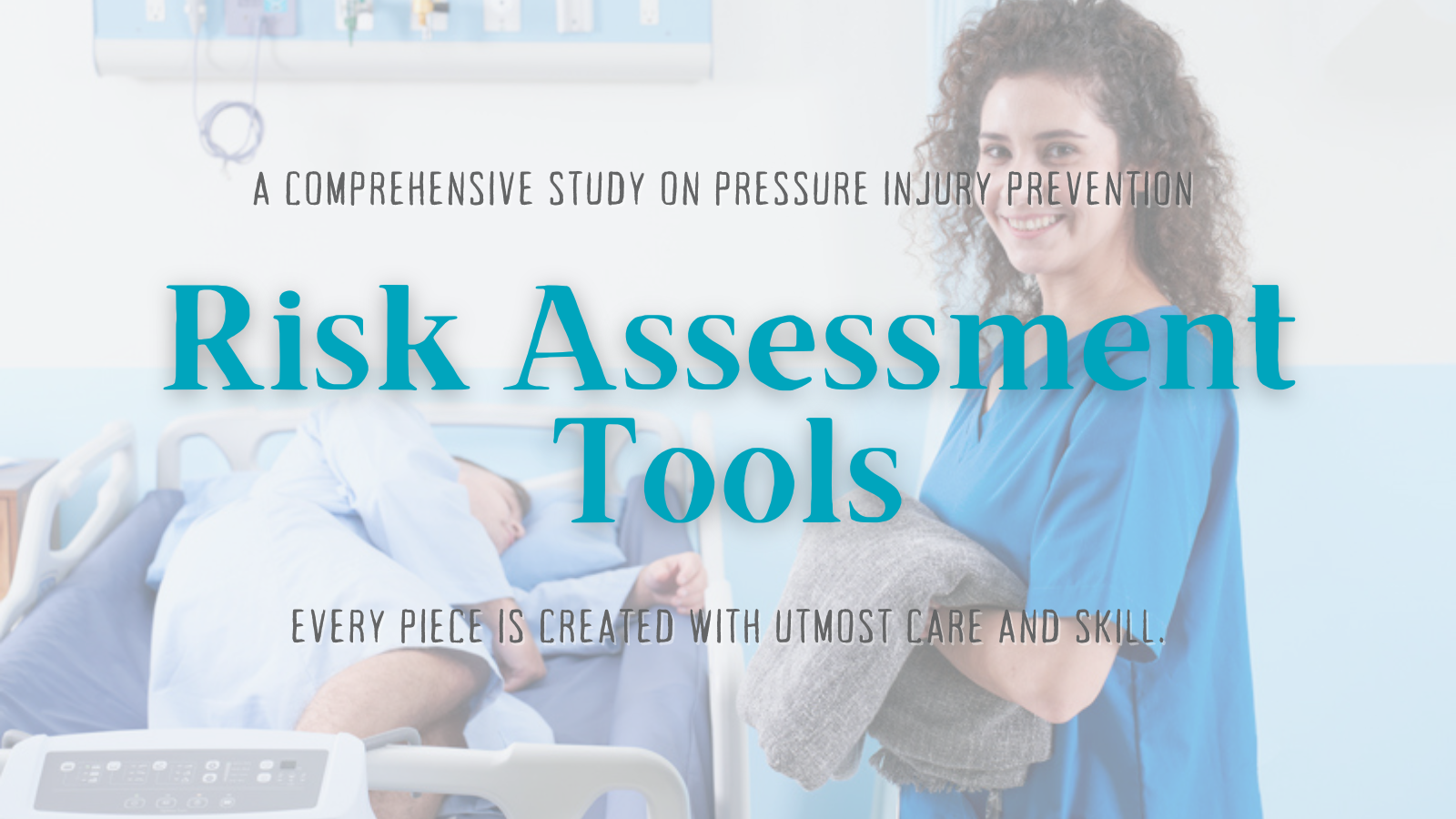A Comprehensive Study on Pressure Injury Prevention: Risk Assessment Tools

Pressure injuries, also known as bedsores,
are a significant concern in healthcare settings. These injuries can cause
pain, increase the risk of infection, and lead to extended hospital stays,
making early risk identification and preventive measures critical. This post
will explore three commonly used pressure injury risk assessment tools: the
Braden Scale, Norton Scale, and Waterlow Score, discussing how each works,
their interpretation, and relevant clinical evidence supporting their use.
The Importance of Risk Assessment Tools
Risk assessment tools provide a structured approach for healthcare professionals to evaluate the likelihood of a patient developing pressure injuries. Each tool considers various risk factors, such as mobility, nutrition, and skin moisture, to assign a score that guides clinical decisions. Selecting the right tool based on the patient's condition and setting ensures that appropriate preventive interventions can be implemented.
1. The Braden Scale: Comprehensive and Reliable
The Braden Scale, developed in 1987, is a widely recognized tool used to assess pressure injury risk. It evaluates six critical categories:
- Sensory Perception: The ability to respond to pressure-related discomfort.
- Moisture: The degree to which the skin is exposed to moisture.
- Activity: The level of physical activity.
- Mobility: The ability to change and control body position.
- Nutrition: Usual food intake pattern.
- Friction and Shear: The impact of rubbing or sliding against surfaces.
Each category is scored from 1 to 4, with a total score ranging from 6 to 23. A lower score indicates a higher risk of developing pressure injuries. For example, a score of 9 or lower represents very high risk, while a score above 18 suggests minimal risk.
Clinical Evidence
A multicenter observational study published in Journal of Wound, Ostomy, and Continence Nursing evaluated the effectiveness of the Braden Scale in a real-world setting. In this study, 86 patients classified as medium to high risk using the Braden Scale were followed for 35 days while placed on a powered alternating pressure air mattress (P-APAM). The results showed that no patients developed a pressure injury, validating the predictive accuracy of the Braden Scale when combined with appropriate preventive measures(incidence_of_pressure_i…).
In another large-scale study involving elderly patients in long-term care, the Braden Scale demonstrated 89% accuracy in predicting pressure injuries (Clinical Nursing Research, 2019), further supporting its use as a reliable tool for risk assessment.
2. The Norton Scale: Quick and Practical
Developed in 1962, the Norton Scale is one of the oldest tools for assessing pressure injury risk. It focuses on five key factors:
- Physical Condition: General health.
- Mental Condition: Cognitive awareness.
- Activity: Ability to move independently.
- Mobility: Capacity to change position.
- Incontinence: Degree of moisture exposure due to incontinence.
Each factor is scored from 1 to 4, with a total score of 14 or below indicating high risk. The simplicity of the Norton Scale makes it a practical choice for settings where time is limited or where patients present with less complex risk profiles.
Clinical Evidence
A 2018 study comparing the Norton and Braden Scales in elderly hospitalized patients found that the Norton Scale had a sensitivity of 78%, performing well in predicting pressure injuries in straightforward cases (BMC Geriatrics, 2018). While the Braden Scale may offer more detailed assessments, the Norton Scale remains a valuable tool for quick risk assessments in certain clinical settings.
3. The Waterlow Score: A Multifactorial Approach
The Waterlow Score, introduced in 1985, assesses a broader range of risk factors than either the Braden or Norton Scales. It includes:
- Build/Weight: Body mass index (BMI).
- Skin Type: Condition and integrity of the skin.
- Mobility: Ability to move independently.
- Continence: Control over bladder and bowel movements.
- Special Risks: Medical conditions like diabetes, malnutrition, and age.
Points are assigned to each category, with a total score of 10 or more indicating risk and a score above 20 signaling very high risk.
Clinical Evidence
A 2020 study published in International Journal of Nursing Studies demonstrated that the Waterlow Score was particularly effective in identifying patients at risk in intensive care settings. The study found that patients with higher Waterlow Scores who received appropriate interventions, including pressure-relieving mattresses, experienced a significant reduction in pressure injury incidence.
How to Choose the Right Tool
Each of these tools has been clinically validated, but their suitability may depend on the healthcare setting and patient population:
- Braden Scale: Ideal for a wide variety of settings, offering a balance between complexity and ease of use.
- Norton Scale: A simpler option for quick assessments, particularly in lower-risk patients.
- Waterlow Score: Comprehensive and suited to patients with multiple risk factors or in critical care environments.
Partnering with Wellell America Corp for Pressure Injury Prevention
At Wellell America Corp, we are dedicated to supporting healthcare providers in their efforts to prevent pressure injuries. With over 20 years of experience as a reliable manufacturer, we take pride in producing high-quality therapeutic support surfaces, including our innovative Optima series. Designed with advanced technology, our products, such as powered alternating pressure air mattresses, provide consistent and effective support for at-risk patients across various healthcare settings.
As a trusted partner, we equip healthcare facilities with innovative, dependable tools to enhance patient comfort and outcomes—backed by a commitment to excellence and quality in every product we deliver. R
👉 Reach out for more information
References
- Meaume, S., Urbinelli, R., & Marty, M. (2024). Incidence of Pressure Injuries in Patients at Risk Using a Powered Alternating Pressure Air Mattress. Journal of Wound, Ostomy, and Continence Nursing, 51(5), 382-388.
- BMC Geriatrics, 2018, "Comparative Evaluation of the Norton and Braden Scales in Predicting Pressure Ulcers in Elderly Patients".
- International Journal of Nursing Studies, 2020, "The Waterlow Score and Pressure Injury Prediction in ICU Patients".
- Clinical Nursing Research, 2019, "Risk Factors and Predictive Value of the Braden Scale in Long-Term Care".

